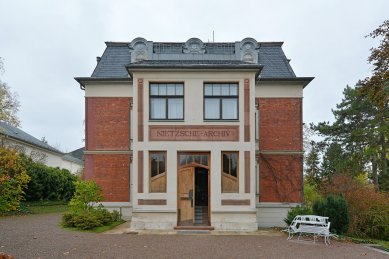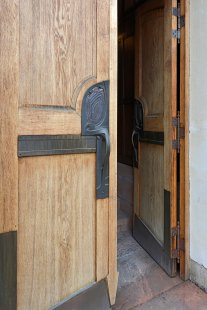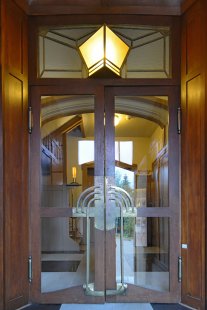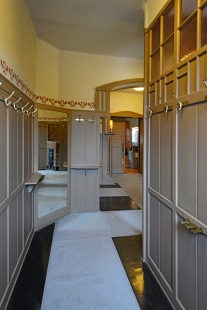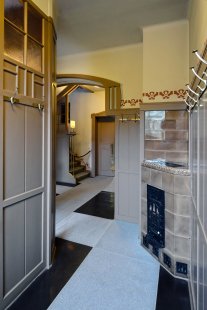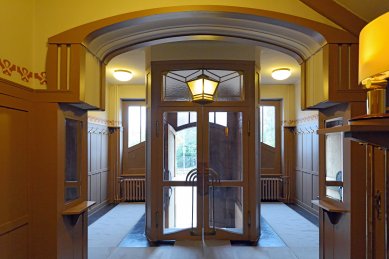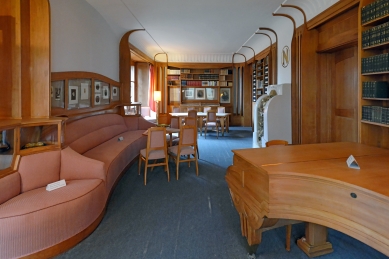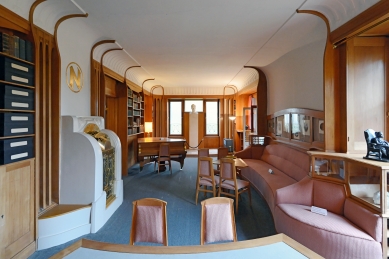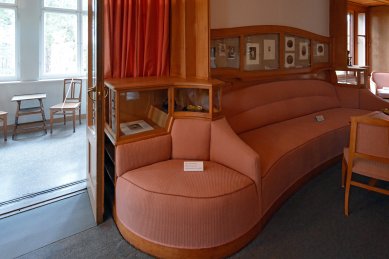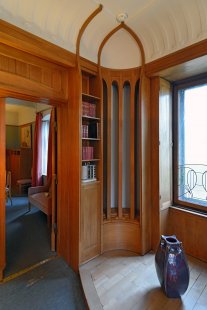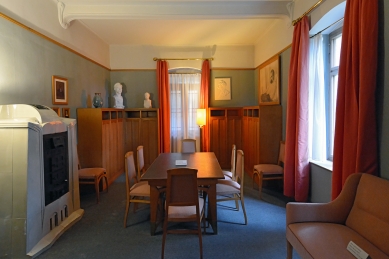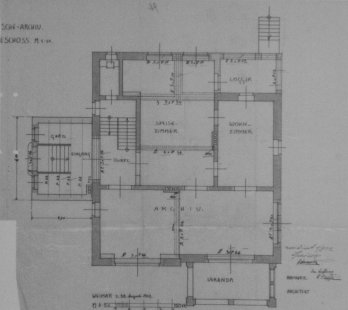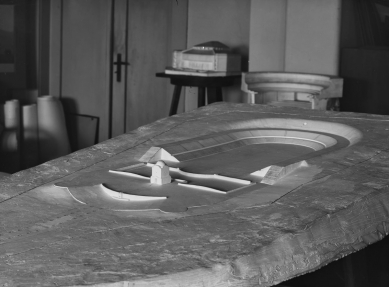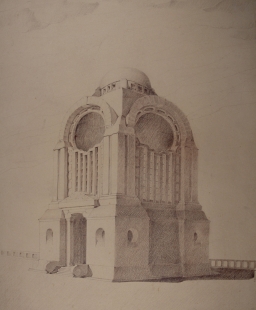
Archive of Friedrich Nietzsche
Nietzsche Archive in Weimar

Thanks to generous patrons and the university's background, writers such as J.W. Goethe, J.F. Schiller, philosopher J.G. Herder, and composer F. Liszt could spend their most productive period in Weimar. One more provocative figure in world philosophy is associated with the Thuringian metropolis, who, after a nervous breakdown, inhabited Villa Silberblick (Silver View) in a semi-conscious state in the hills south of the city. Friedrich Wilhelm Nietzsche was moved from the institution in Basel to the Weimar villa after his mother's death in 1897, where he was cared for by his younger sister Elisabeth Förster, with whom the philosopher had a lifelong alternating conflict and reconciliation. Nietzsche suffered several heart attacks in the historicist villa and died of pneumonia on August 25, 1900. After the philosopher's death, Belgian architect Henry van de Velde came onto the scene, commissioned by Nietzsche's sister to renovate the rooms on the ground floor into an archive that could host lectures, discussions, concerts, and social gatherings. Velde, who moved to Weimar in 1902 at the invitation of Grand Duke Wilhelm Ernst, expanded the historicist villa in the Art Nouveau style with a new entrance portal, a spacious cloakroom, and a winter garden. The walls transition into the ceiling through a massive arch with floral decoration. The built-in furniture made of cherry wood bears Velde's signature, as do the tiled stoves, lighting fixtures, ceramic vases, stained glass windows, and even the grand piano. The central place in the library is occupied by Nietzsche's marble bust by sculptor Max Klinger. Today, some light fixtures have been replaced with modern ones. Likewise, the original blue-painted wooden floor can no longer be admired through the gray carpet. Velde adhered to his motto while designing: “All energy lies in the line. The straight line is a lie. Only the curve is true. Time lies in the circle.”
Nietzsche's stay in Weimar was made possible by patron Meta von Salis (the first Swiss woman to obtain a doctorate from Zurich University), who purchased the villa to create an archive. Nietzsche's sister Elisabeth Förster occupied the upper floors of Villa Silberblick and managed the archive and Nietzsche's legacy for nearly four decades, which was misused by Nazi propaganda in the 1930s.
In addition to shaping the interior, Henry van de Velde also worked on the graphic design of Nietzsche's most famous work Thus Spoke Zarathustra (originally published in 1883) in 1906. Thanks to the initiative and generous support of Count Harry Kessler, Velde developed a total of four project variations for a gigantic Nietzsche memorial with a stadium, tribunes, and swimming pool between 1911 and 1912. The opening of the dignified memorial was scheduled for the approaching anniversary of Nietzsche's posthumous seventieth birthday in October 1914. However, due to the onset of World War I, the plan was ultimately abandoned. Nietzsche's temple was originally to be located in Bad Berka, half a kilometer west of Villa Silberblick. Its shape resembled another of Velde's monuments for physicist Ernst Abbe, which was built in 1911 in nearby Jena. Velde unsuccessfully attempted to revive the idea of constructing the Nietzsche memorial as late as the mid-1920s in the park De Hoge Veluwe, financed by the Kröller-Müller family.
Nietzsche's stay in Weimar was made possible by patron Meta von Salis (the first Swiss woman to obtain a doctorate from Zurich University), who purchased the villa to create an archive. Nietzsche's sister Elisabeth Förster occupied the upper floors of Villa Silberblick and managed the archive and Nietzsche's legacy for nearly four decades, which was misused by Nazi propaganda in the 1930s.
In addition to shaping the interior, Henry van de Velde also worked on the graphic design of Nietzsche's most famous work Thus Spoke Zarathustra (originally published in 1883) in 1906. Thanks to the initiative and generous support of Count Harry Kessler, Velde developed a total of four project variations for a gigantic Nietzsche memorial with a stadium, tribunes, and swimming pool between 1911 and 1912. The opening of the dignified memorial was scheduled for the approaching anniversary of Nietzsche's posthumous seventieth birthday in October 1914. However, due to the onset of World War I, the plan was ultimately abandoned. Nietzsche's temple was originally to be located in Bad Berka, half a kilometer west of Villa Silberblick. Its shape resembled another of Velde's monuments for physicist Ernst Abbe, which was built in 1911 in nearby Jena. Velde unsuccessfully attempted to revive the idea of constructing the Nietzsche memorial as late as the mid-1920s in the park De Hoge Veluwe, financed by the Kröller-Müller family.
The English translation is powered by AI tool. Switch to Czech to view the original text source.
0 comments
add comment


